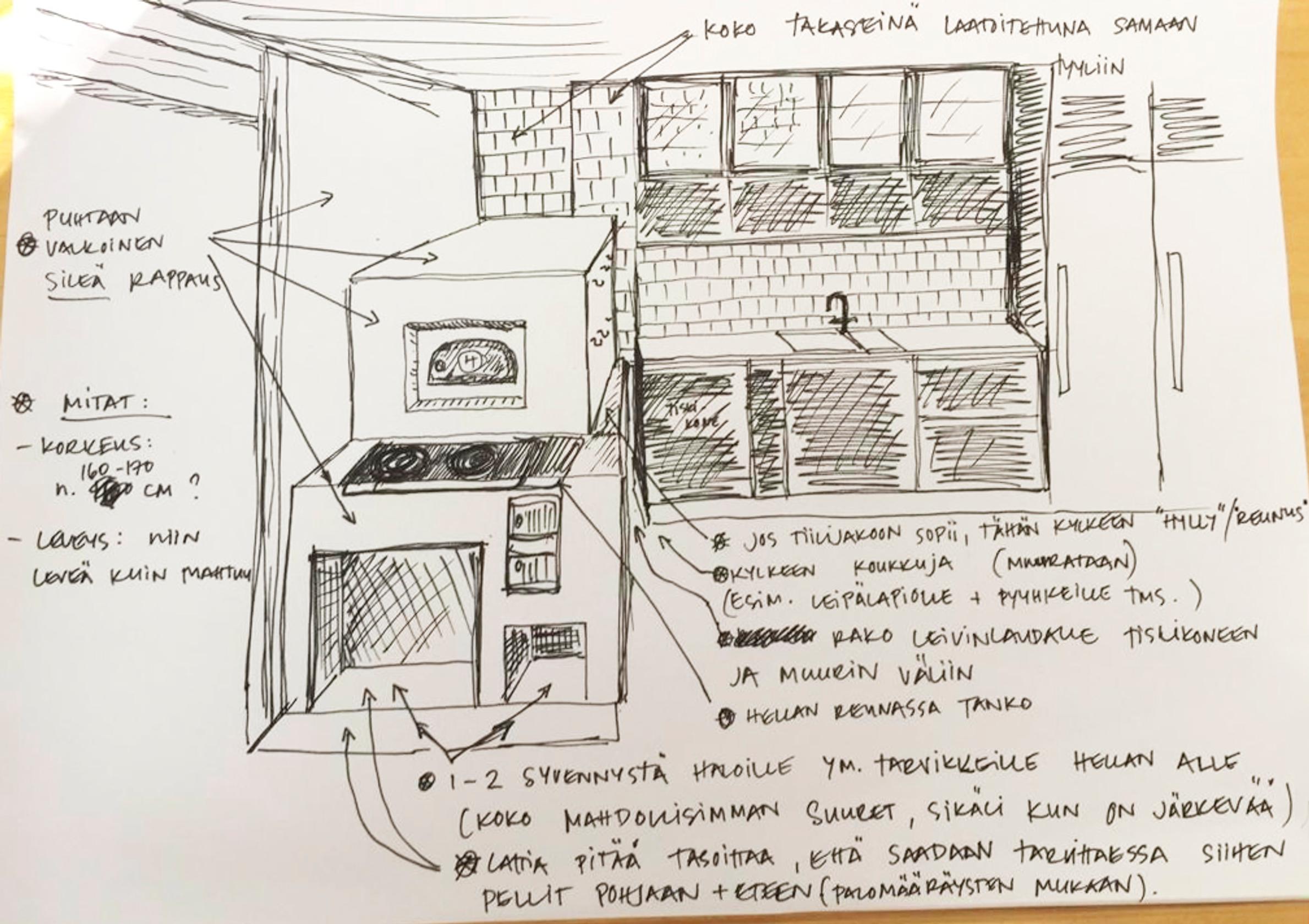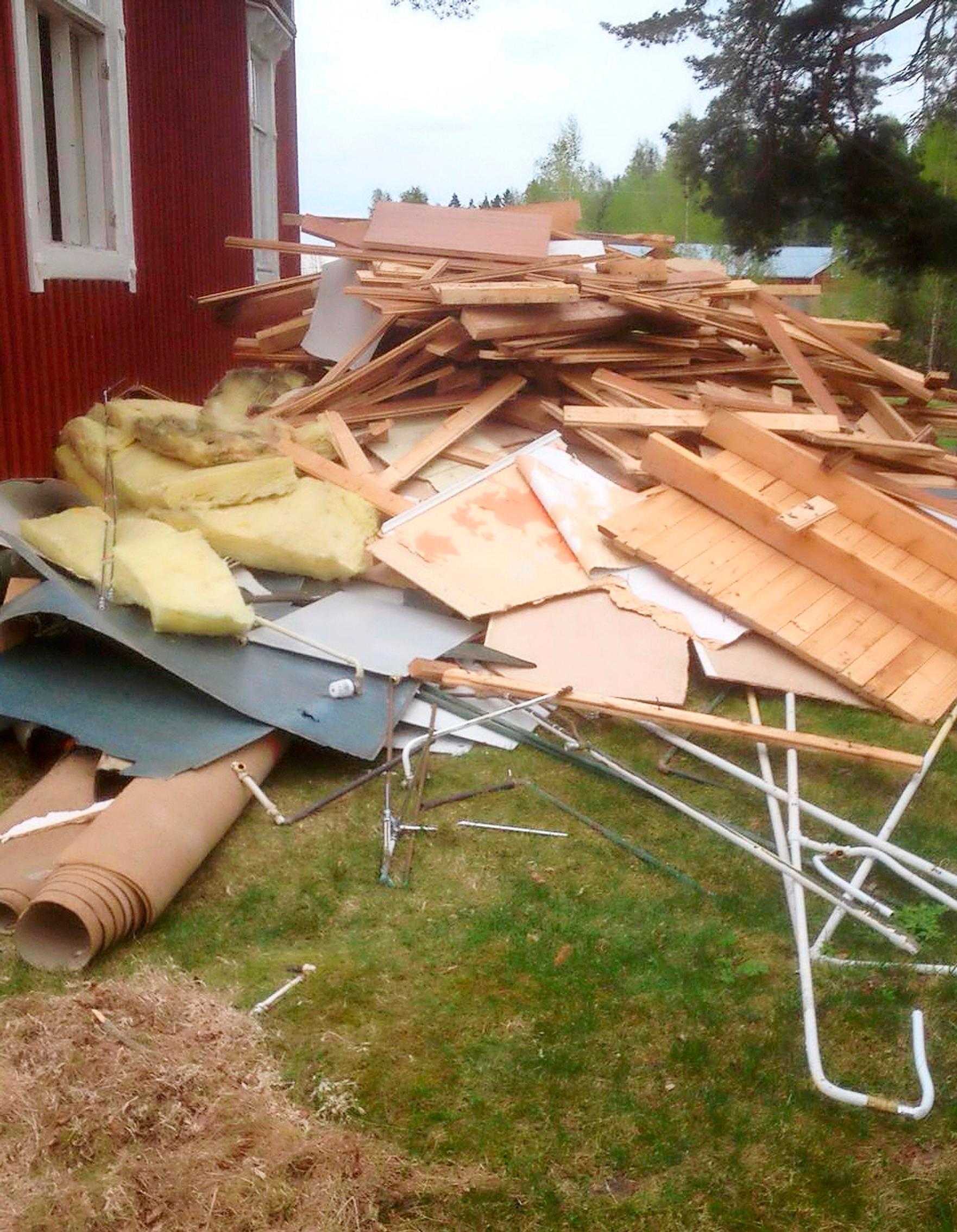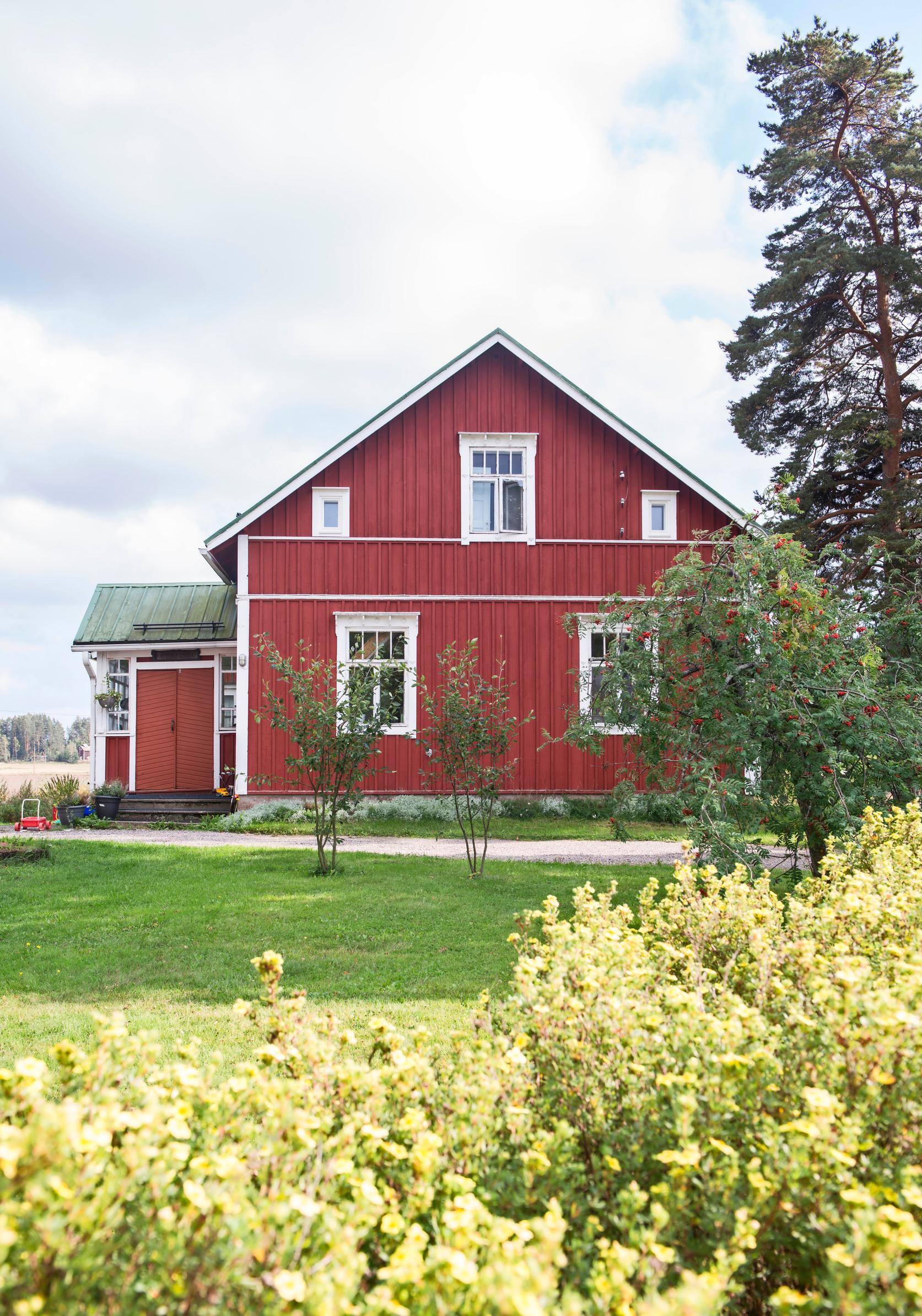
“It was a bit daring and naive to buy an old farm”: a seven-year log house renovation
A nearly 100-year-old log house was revived after years of renovations. The owners’ handiwork is visible in every room. Eeva and Aki celebrated each finished room with champagne and a moment of rest. “If we had known beforehand how much work it would require, we might not have done it.”
When Eeva and Aki started looking for their forever home nine years ago, they began a patient quest. Eeva lived in Helsinki in the south of Finland, and Aki lived in Oulu in the north. At first, they searched for a shared home in the Tampere region in southwestern Finland, but when nothing suitable turned up, they expanded their search further. Both yearned for the countryside. Their dream was to find a small farm and an old log house within a reasonable distance of Helsinki.
Eeva and Aki’s patience was rewarded after a few years, when they drove up to a large red log house in Eastern Uusimaa. The yard, bordering the forest, and the old courtyard buildings with a barn and a sauna instantly enchanted them. Built in 1925, the two-story house was livable, but over time its surfaces had been layered with fiberboard, Haltex panelling, chipboard, and multiple layers of wallpaper. The most recent renovations had been done in the 1970s by the family’s second generation.
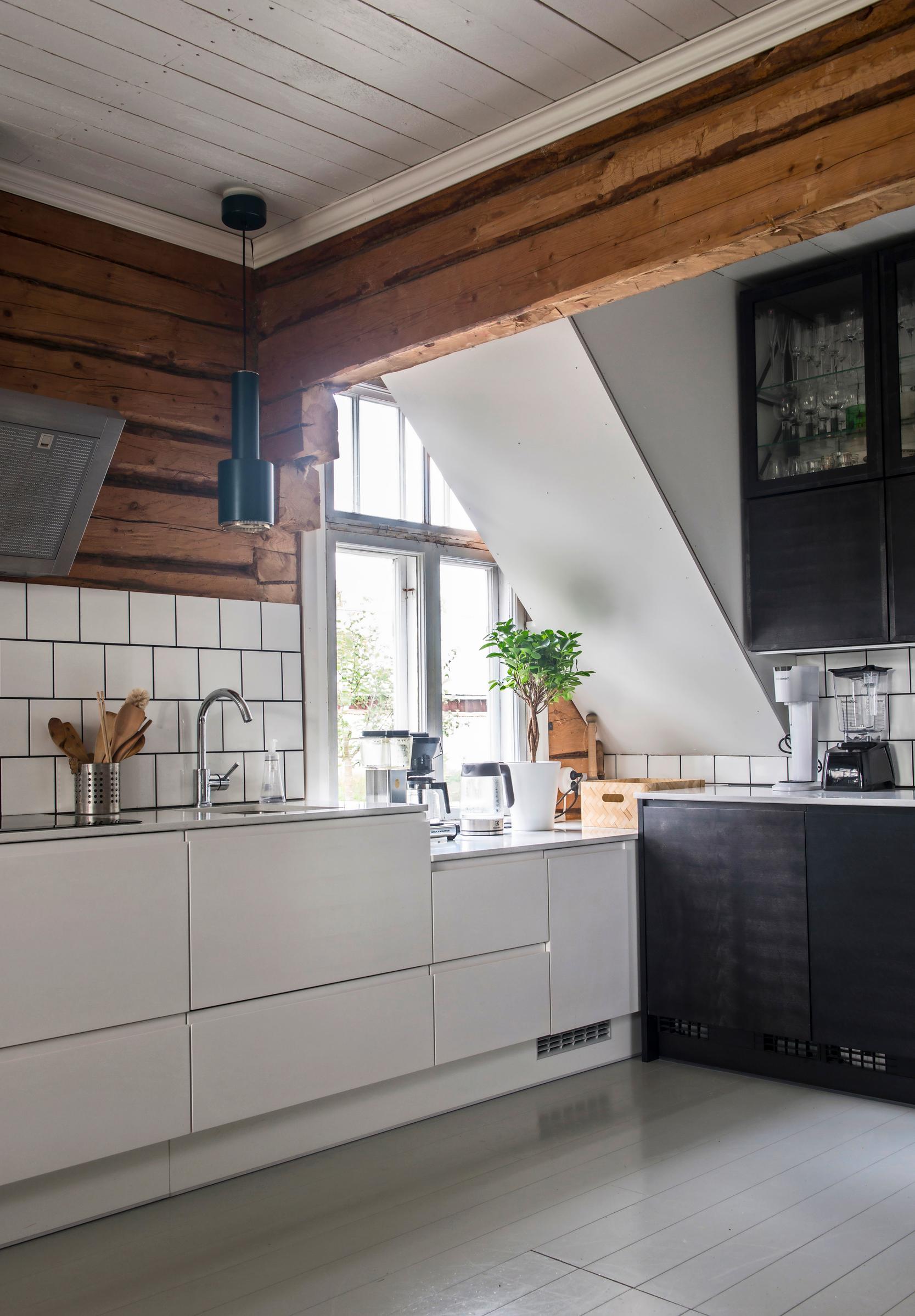
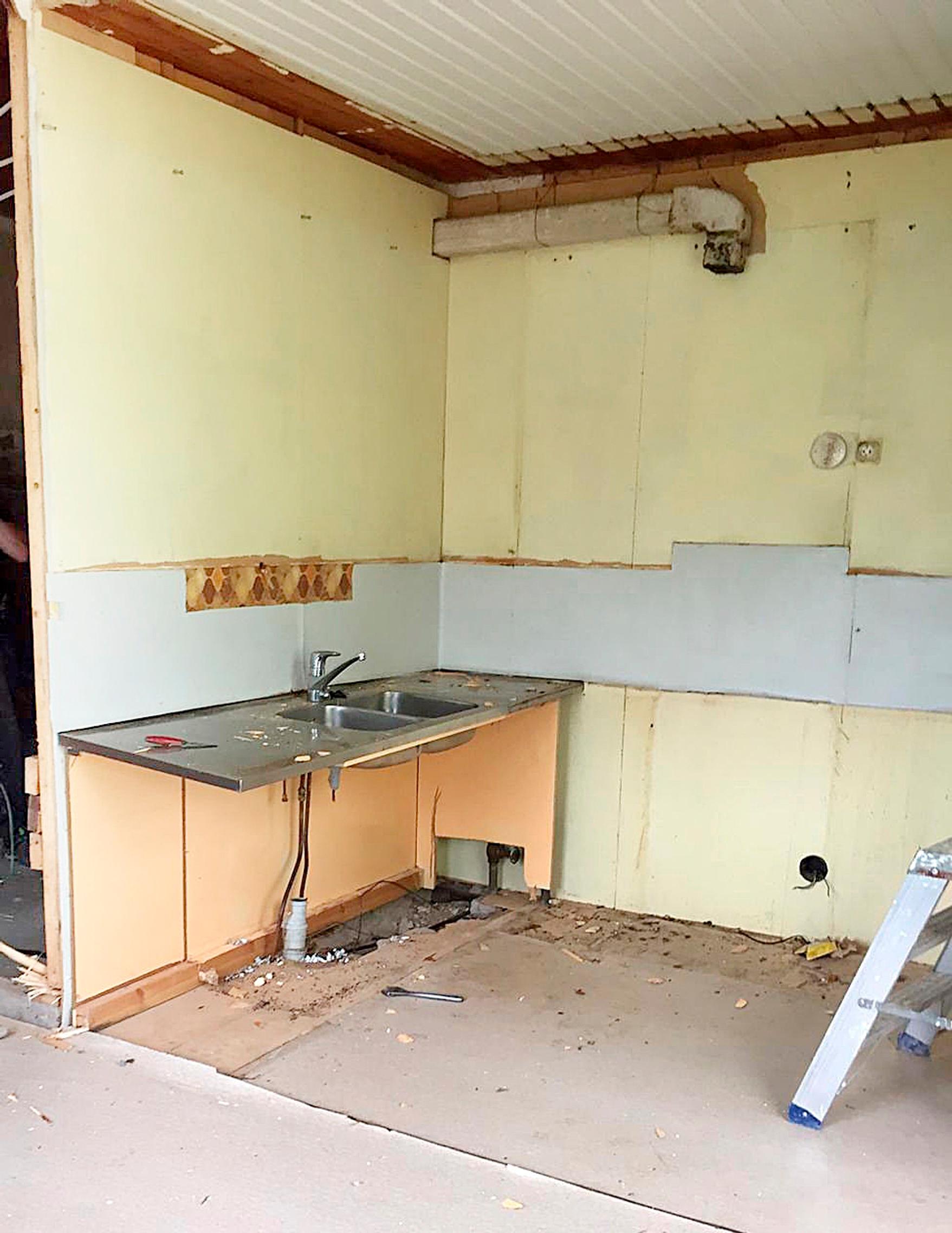
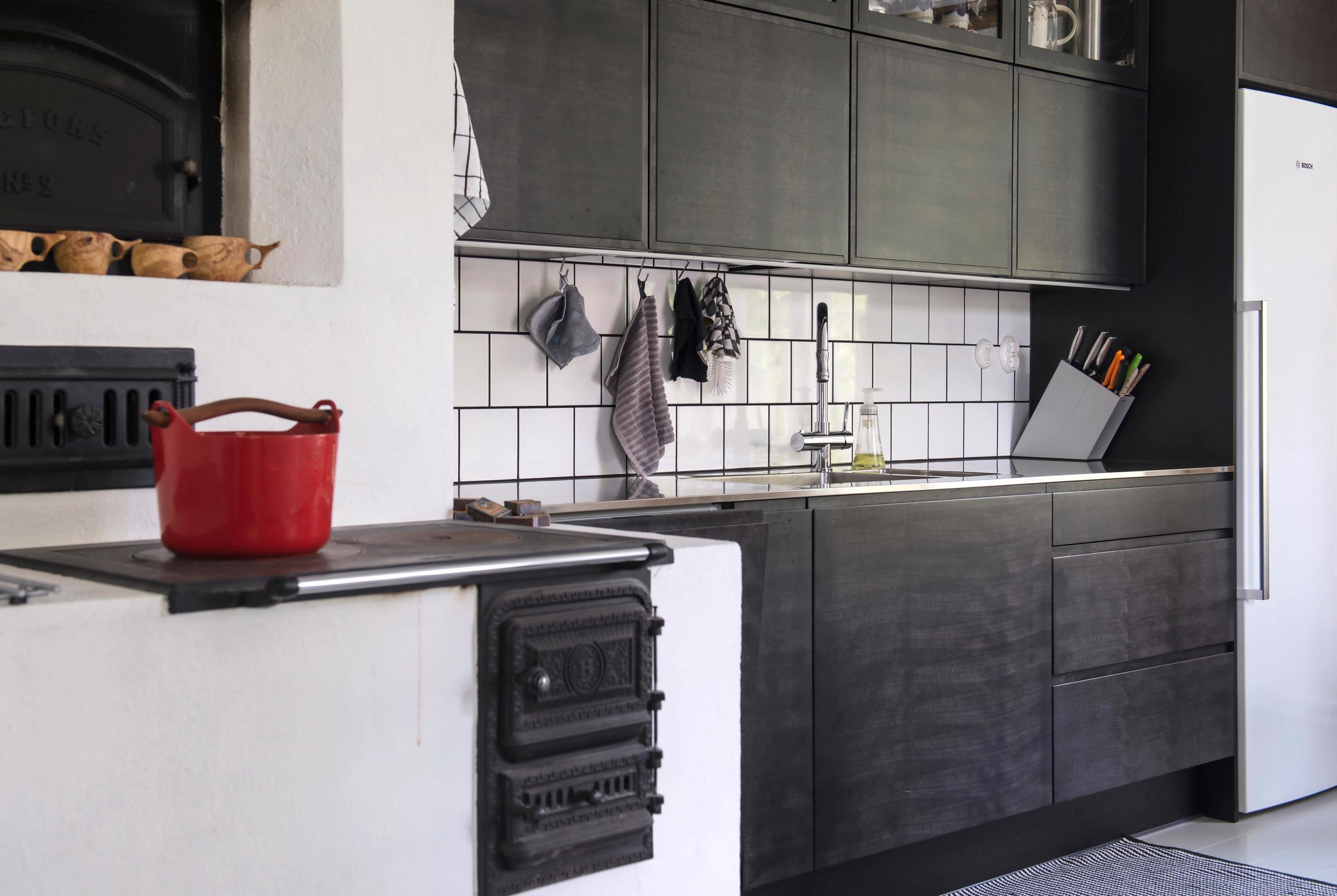
Eeva and Aki wanted a home that reflected their own style, but decided to renovate it gradually while living there. On moving day, they had to figure out where to put all the furniture. The previous owners had left plenty behind, and two loads—one from Oulu and one from Helsinki—also needed space. There was a great deal of stuff. From three sets of household items, they chose those that best fit the house. Many older pieces belonging to the house remained after a bit of polishing.
Patience was at the heart of their renovation philosophy. They believed you need to truly understand yourself before committing to such a long-term project. Eeva and Aki also had to decide how much unfinished space they could live with.
“Before having children, we hardly noticed the unfinished spaces except here and there. With one child, we got by somehow. But renovating the kitchen with a baby and a three-year-old was tougher,” the couple recalls of a time they spent mostly at home.
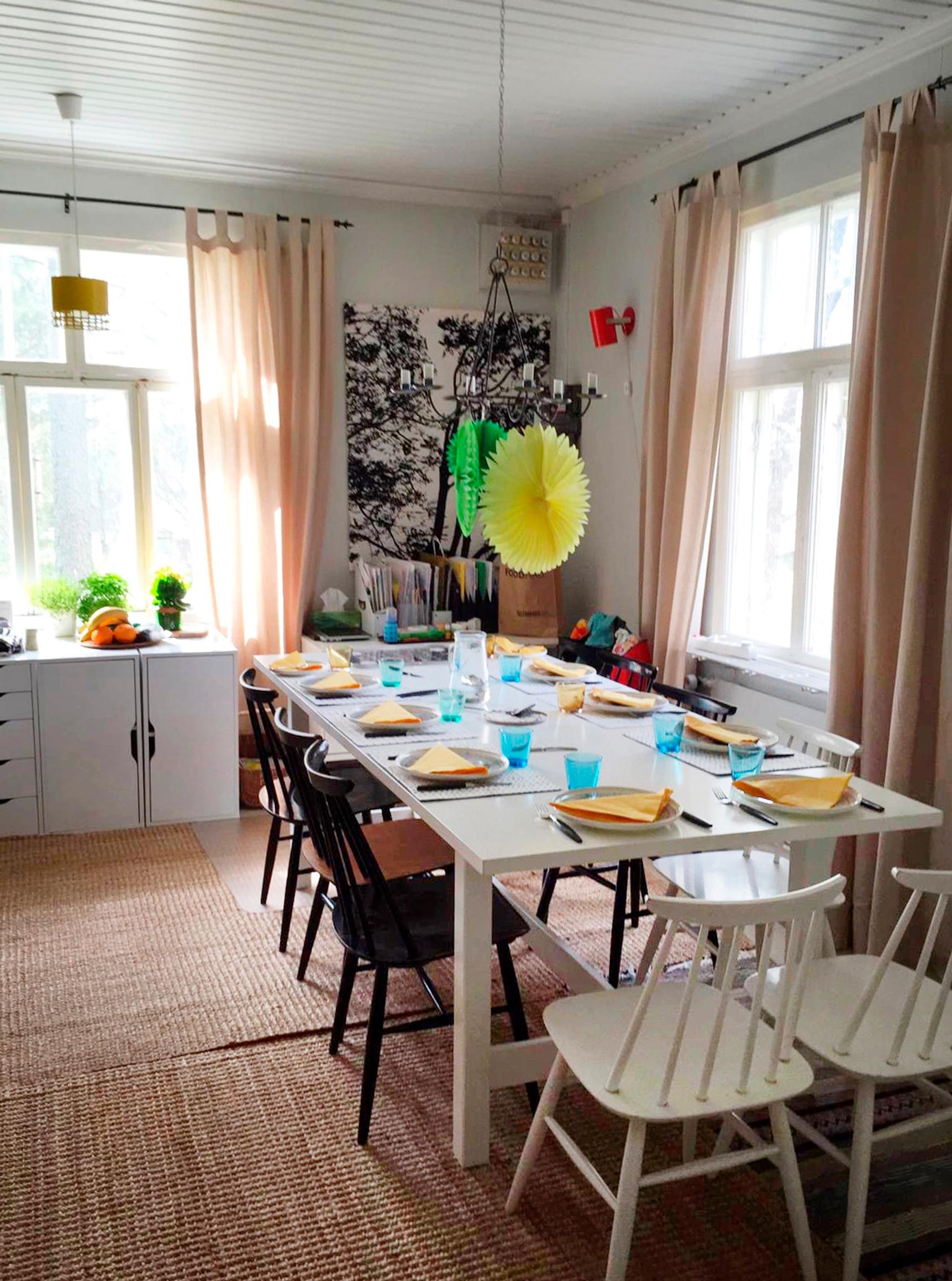
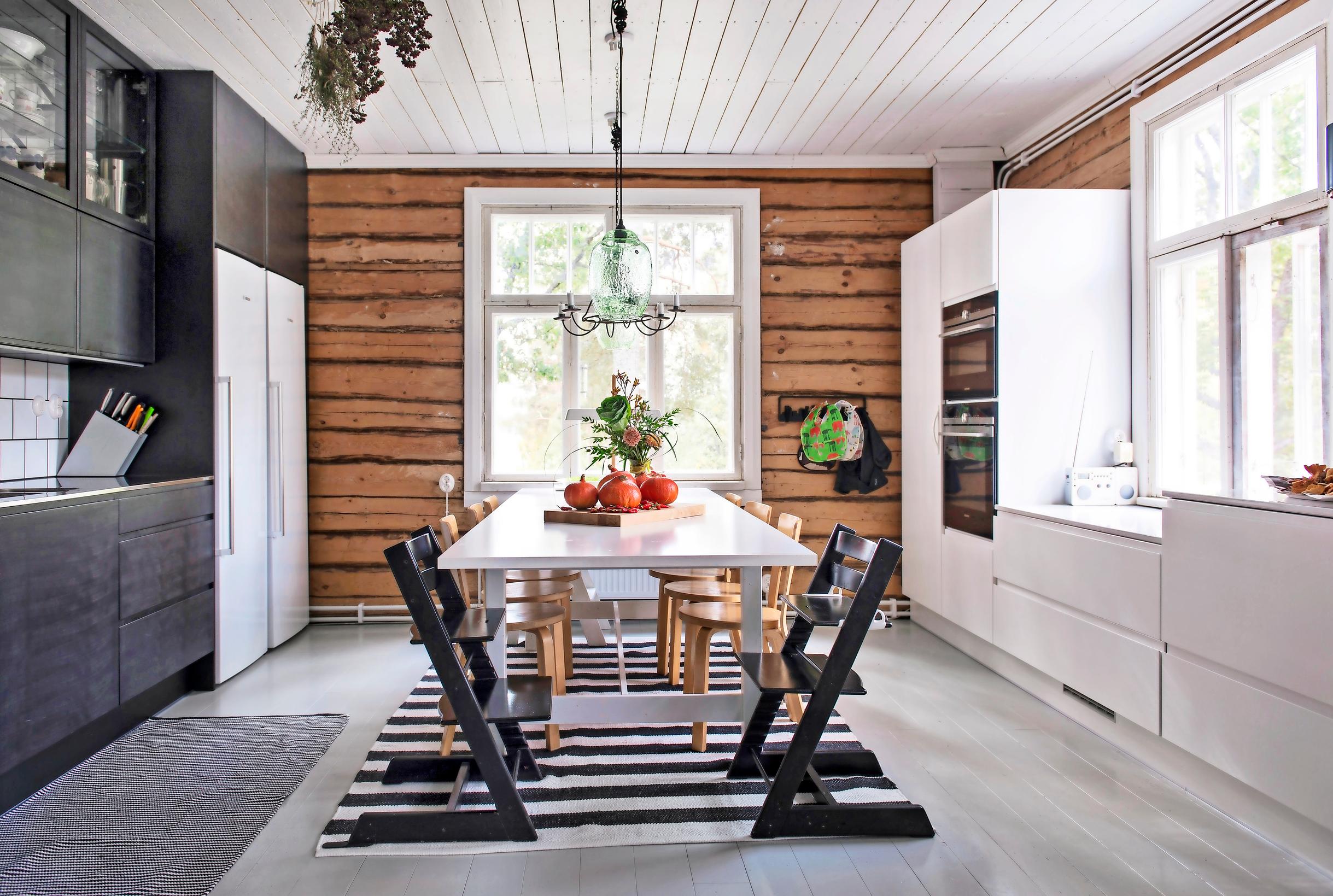
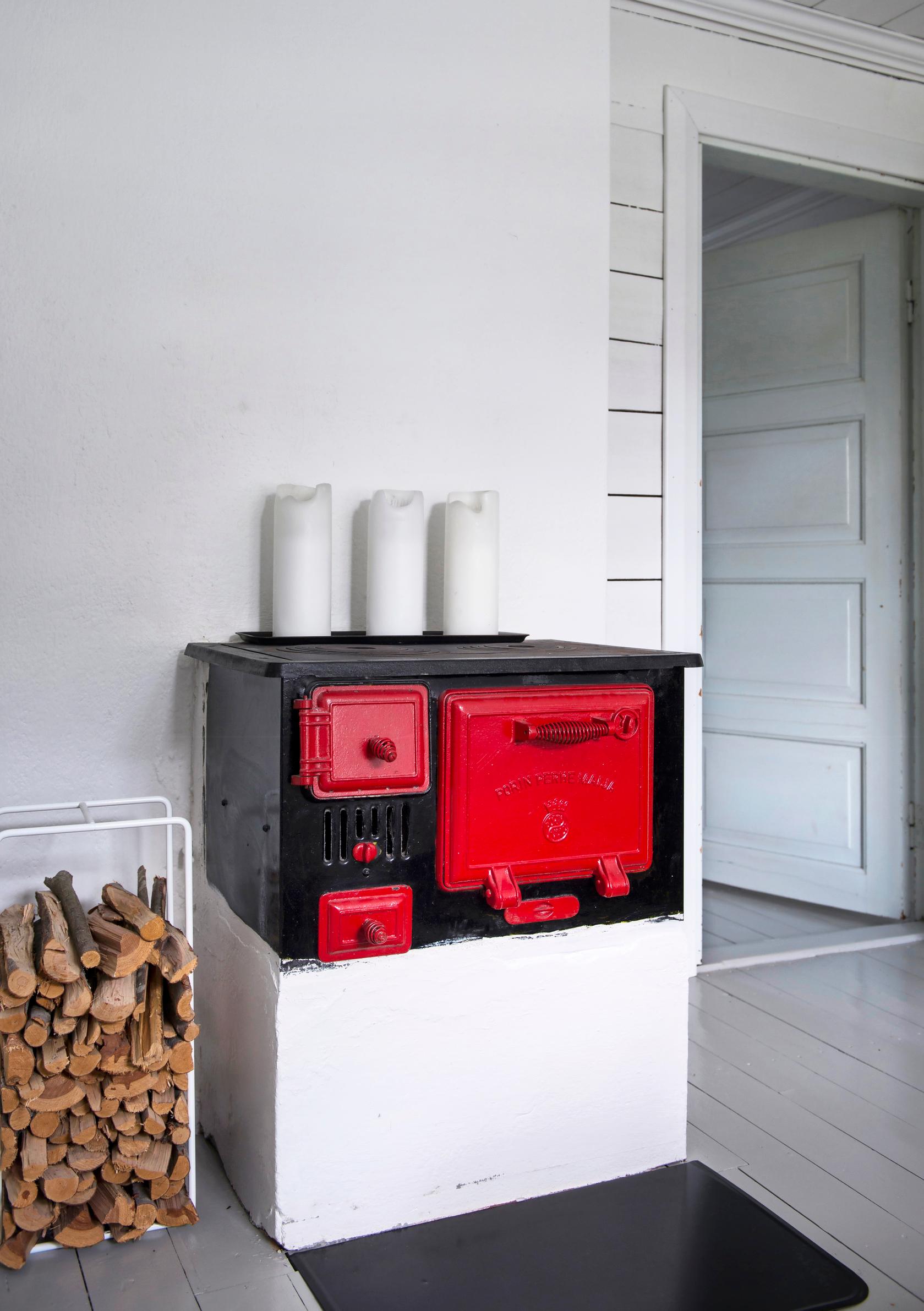
Before starting the renovation, Eeva and Aki studied how to restore old houses carefully. Neither had dealt with a project of this size before, though they were used to tasks like filling and painting. Their willingness to do much of the work themselves started in childhood, when they learned practical skills such as tying fishing lures, fixing bikes, and doing hay work.
They didn't want to take on too much at once. From the start, their plan was to renovate each room step by step. Good planning, respect for traditional building methods, and carefully weighing different options were essential.
“Live in the house for a year before doing anything. Pay attention to how you use each space and what you want from them. With an old house, you never know what you’ll find until the top layers are stripped away,” Aki says.
Eeva and Aki followed their own advice, with one necessary exception.
“We dove right in. A few weeks after we closed the deal and moved in, we were already renovating the bathroom. That was because the waterproofing in the old bathroom was likely from the 1960s, and we didn’t want our water use to cause any damage,” Aki explains.
After that, they took nearly a year off to think before continuing.
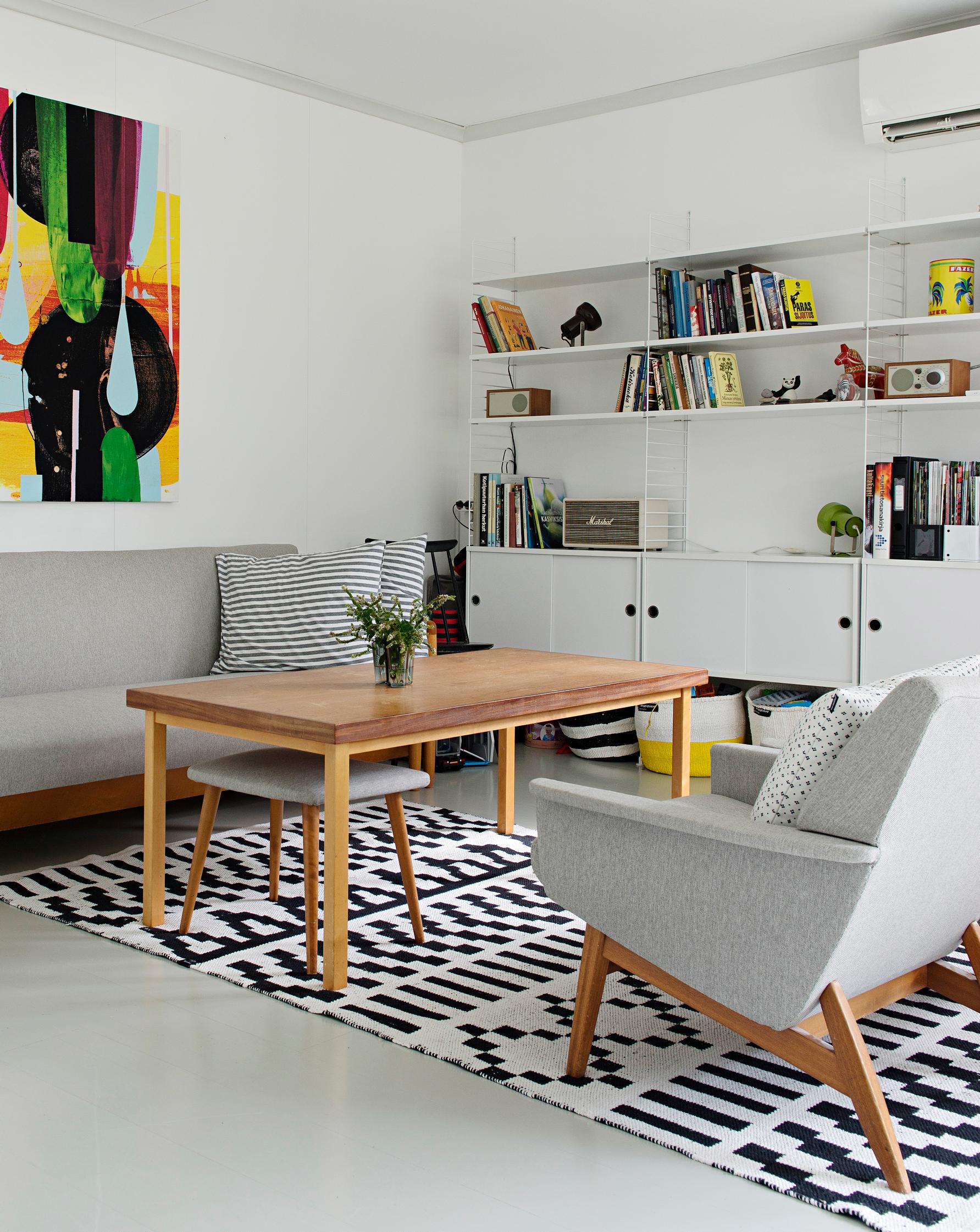
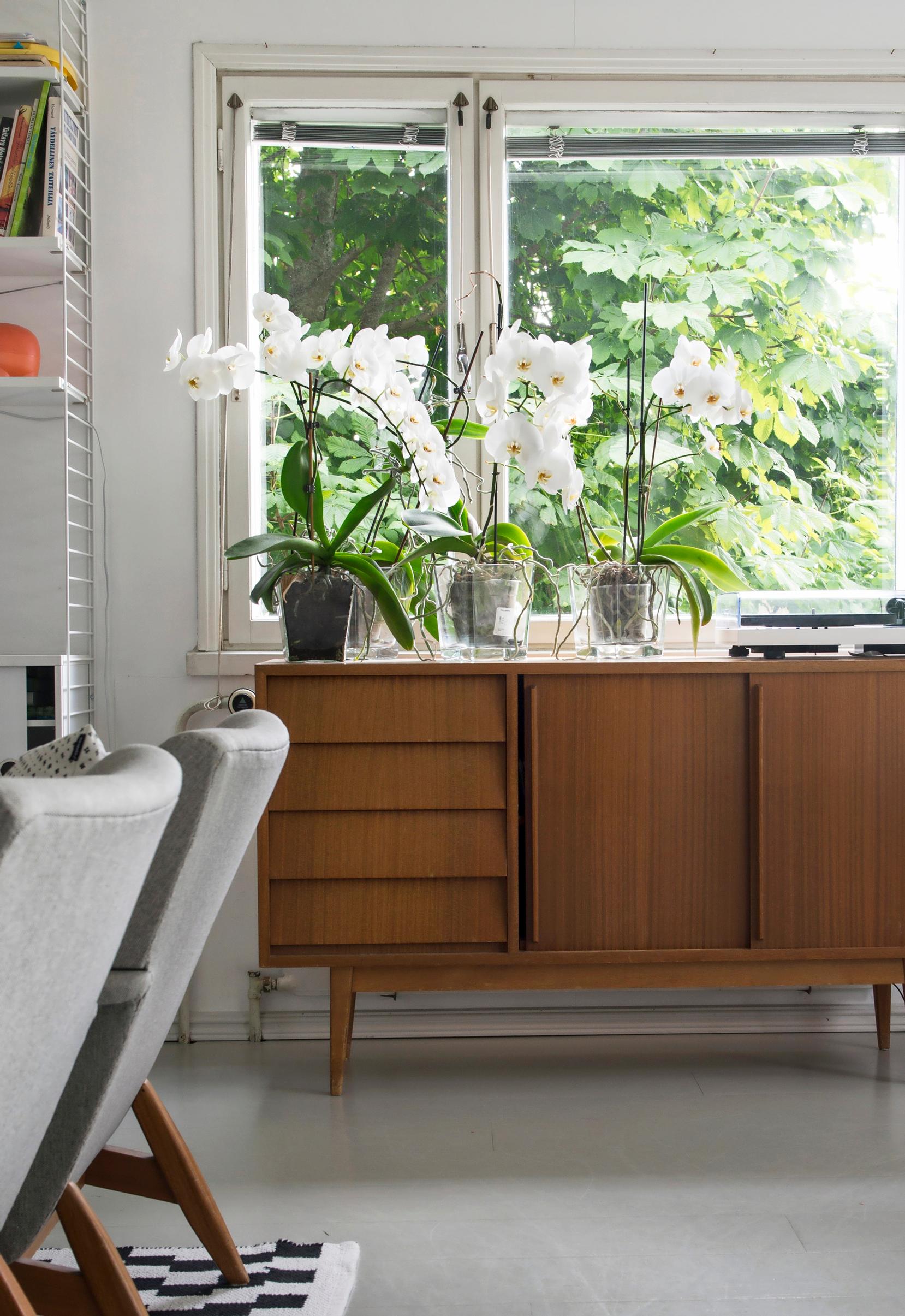
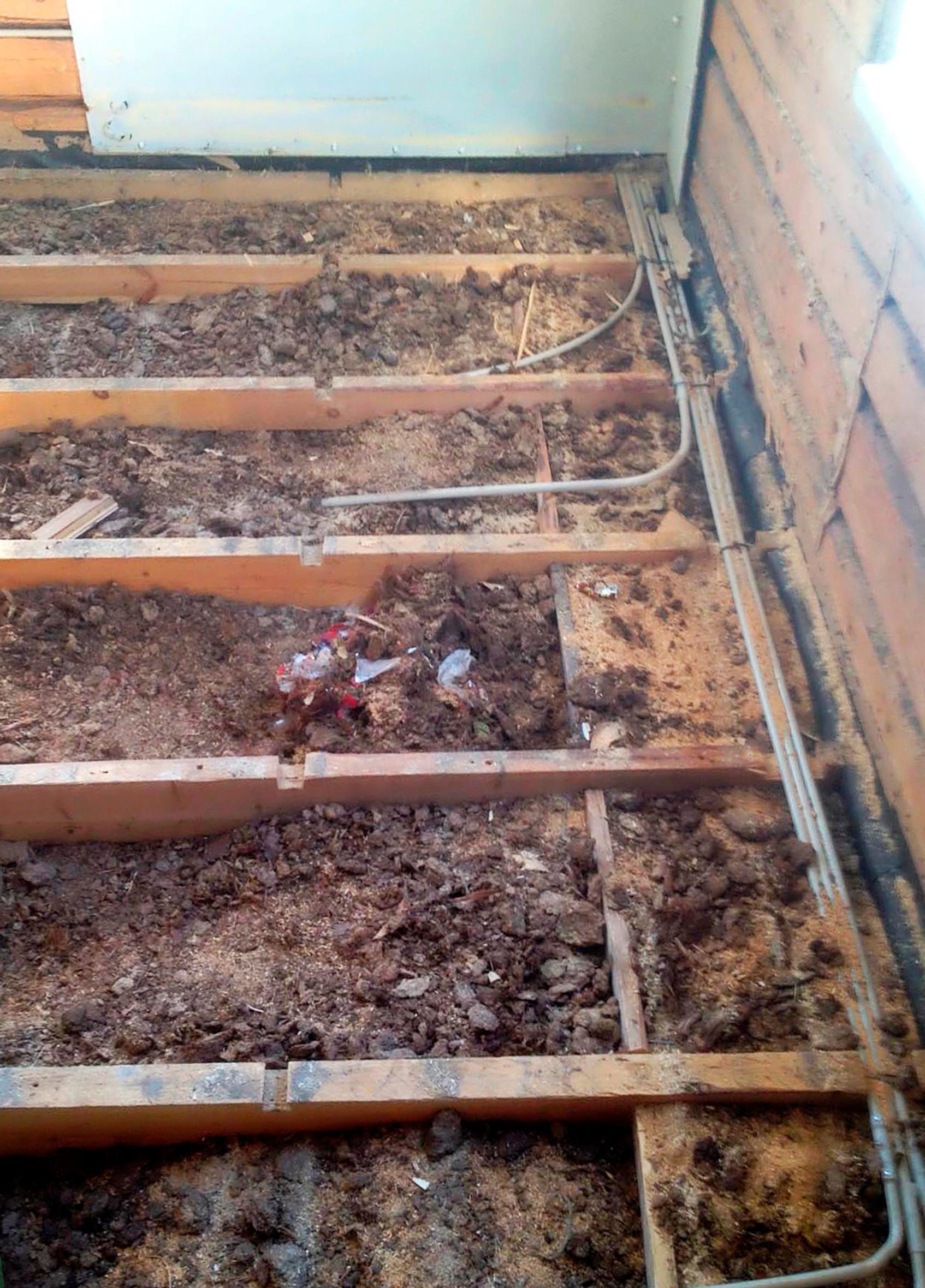
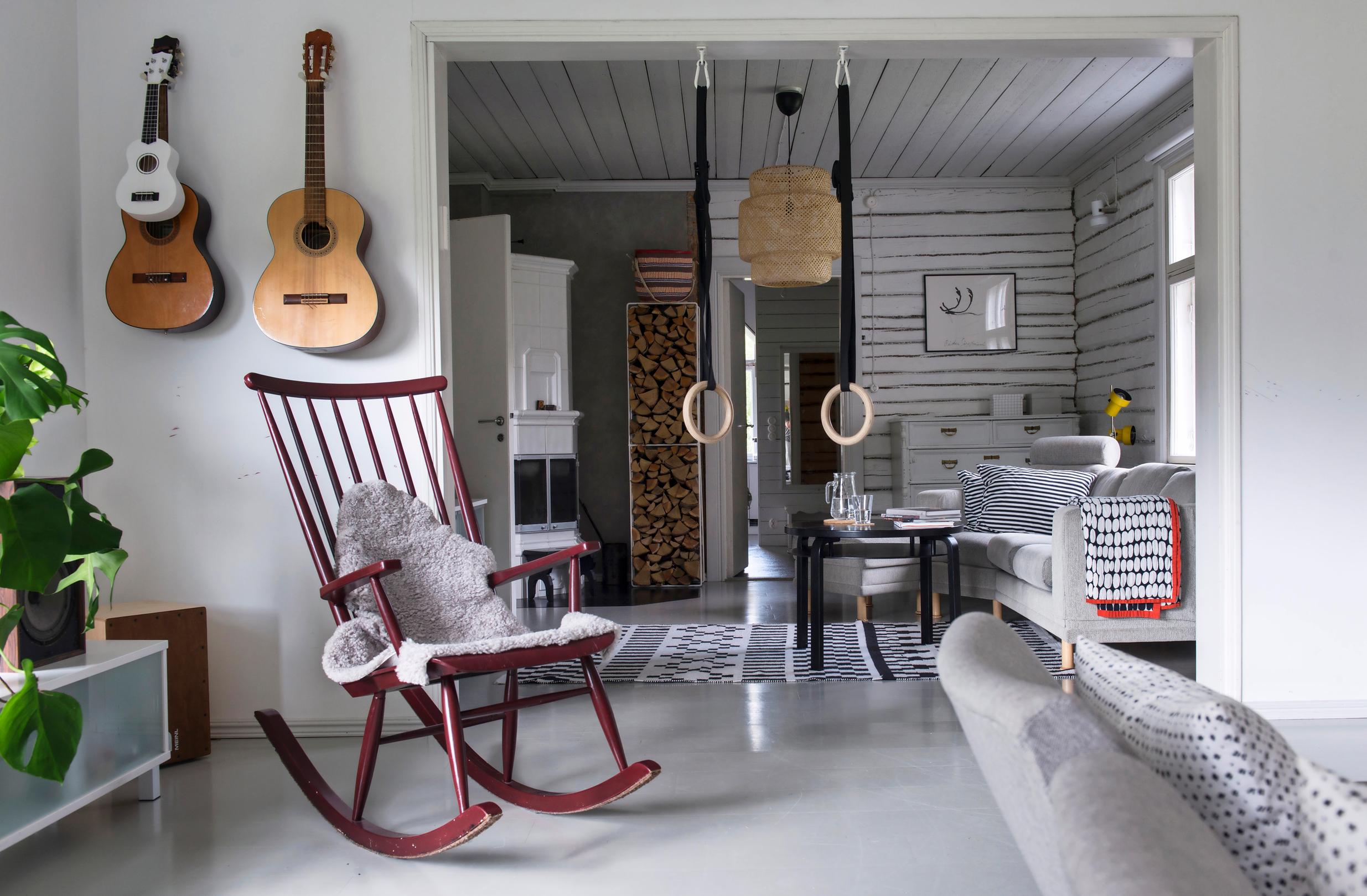
Beyond planning, they did much of the renovation themselves, with help from friends and family for painting and demolition. Some work had to be done at night while the children slept. They hired professionals for certain tasks, including electrical, plumbing, bricklaying, and occasionally carpentry. During the project, the couple learned the value of their own time.
“Sometimes you just have to pay for labor to keep peace in the family. Doing it yourself often saves money but not time, energy, or patience,” Aki says.
Eeva reveals that her sketchbook was the cornerstone of their harmonious renovation partnership.
“I drew up detailed plans for every room in my sketchbook. It’s easier to ‘sell’ your ideas to someone when they’re on paper, and it also makes them simpler to discuss. Aki admitted he couldn’t have visualized a finished space without my scribbles,” Eeva says.
Her sketchbook includes precise drawings of the baking oven that guided the bricklayer. These days, Finnish flatbreads, pizzas, and casseroles made from their homegrown vegetables all bake in that oven.
“One of my dearest childhood memories is making barley flatbreads with Tyyne-Grandma,” Eeva says.
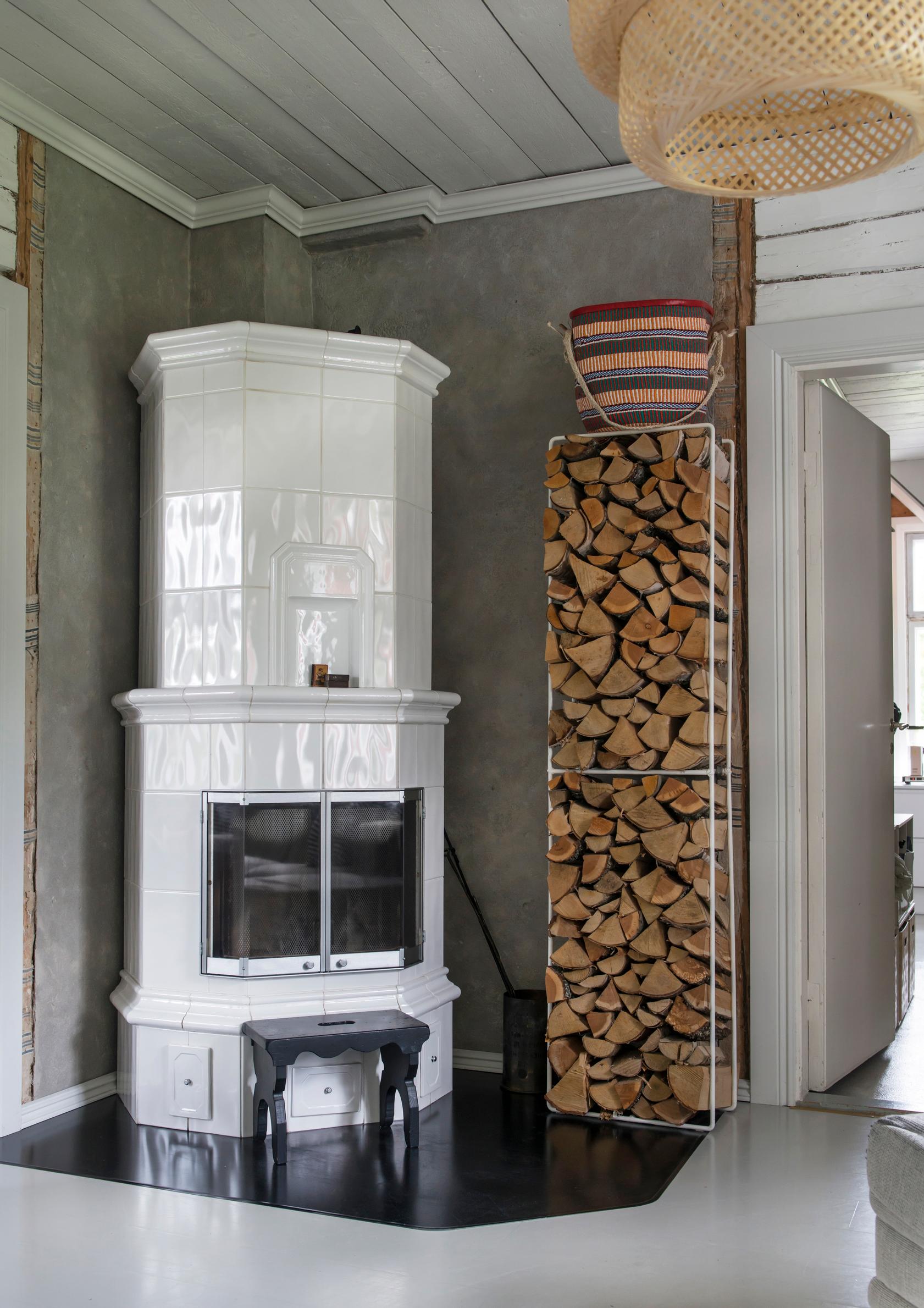
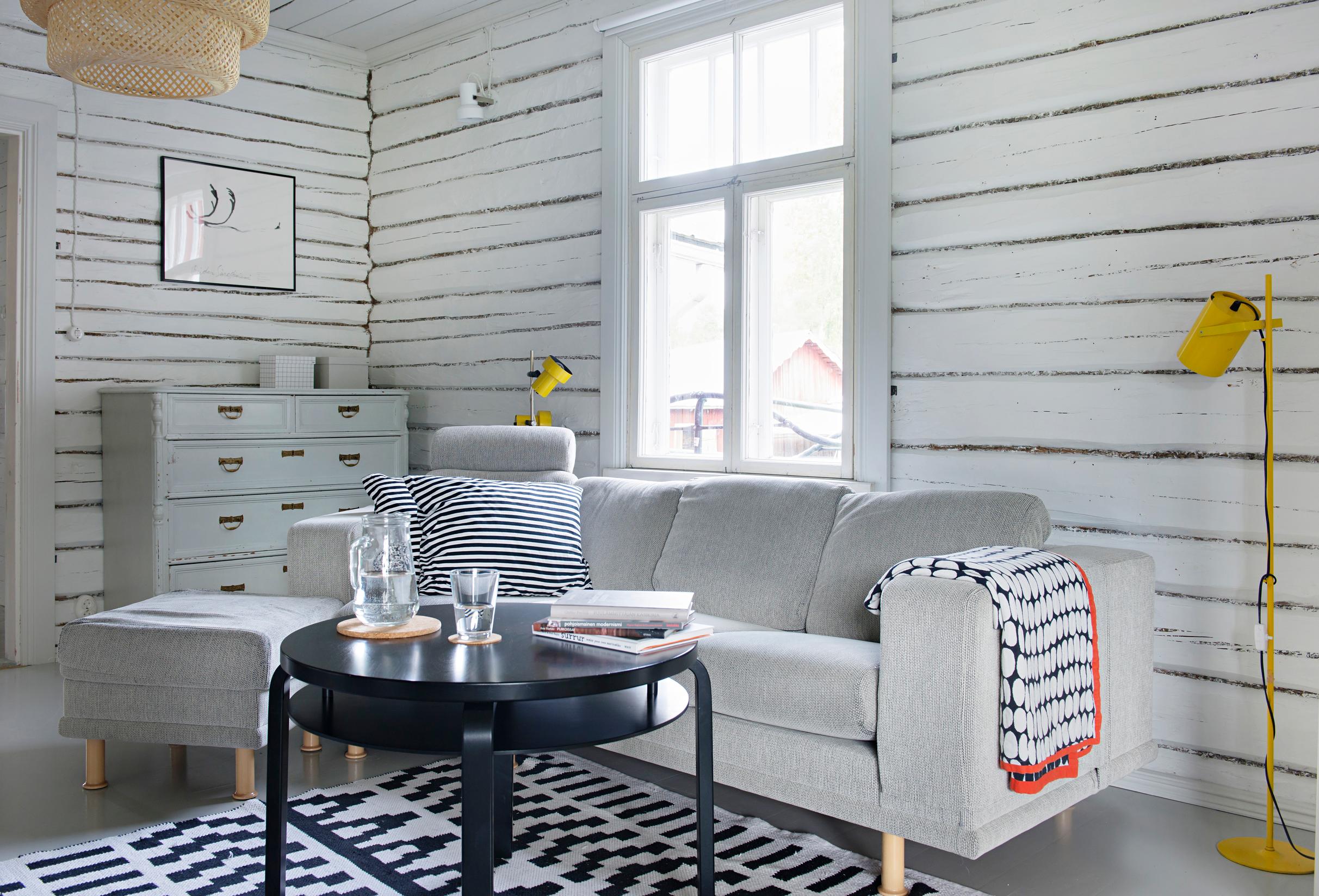
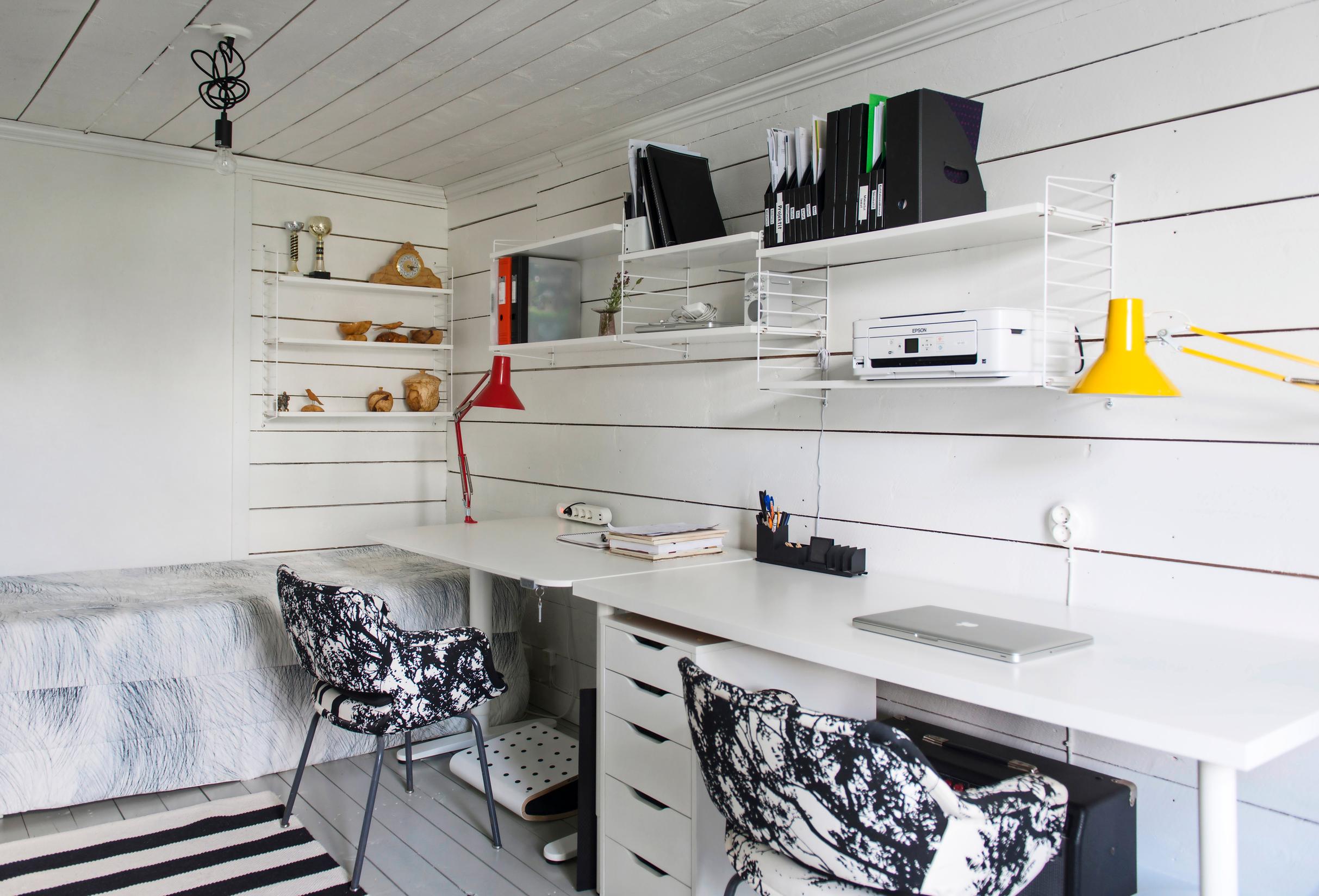
Building the oven was easier because the foundation and chimney were already there. Fireplaces had previously been removed, but besides the baking oven, Eeva and Aki also added a heat-retaining fireplace in the TV room.
“We used some of our wedding gift money for the fireplace,” Aki points out.
In addition to the fireplaces, the house is heated by oil with water-circulating radiators and an air-source heat pump. There is also electric underfloor heating in the entryway and wet areas.
When the renovation started, Eeva and Aki claimed a downstairs bedroom for themselves. After finishing the first renovated room, they felt energized to tackle the next one. Each time a room was completed, they popped open a bottle of champagne to celebrate—then took a short break.
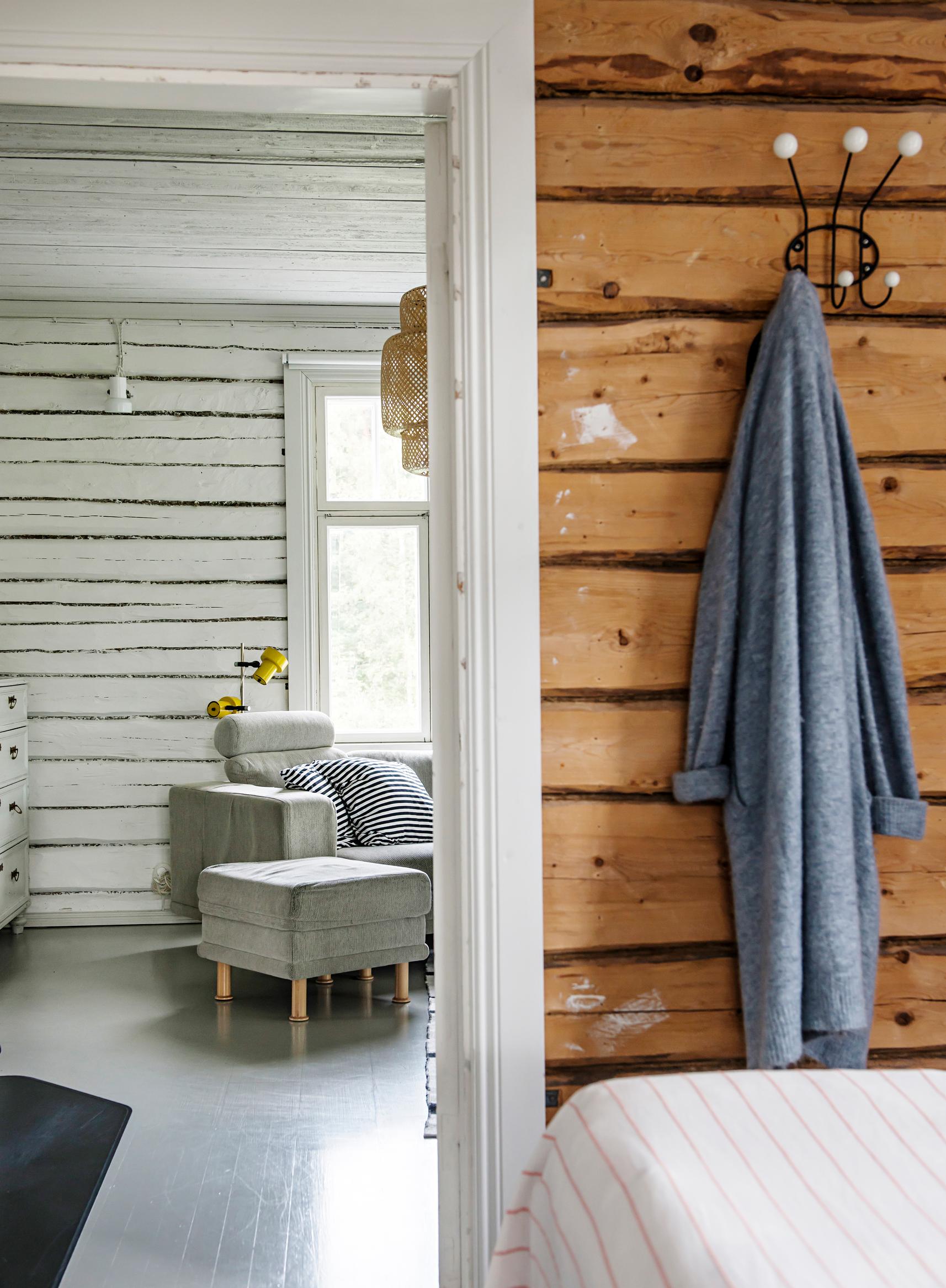
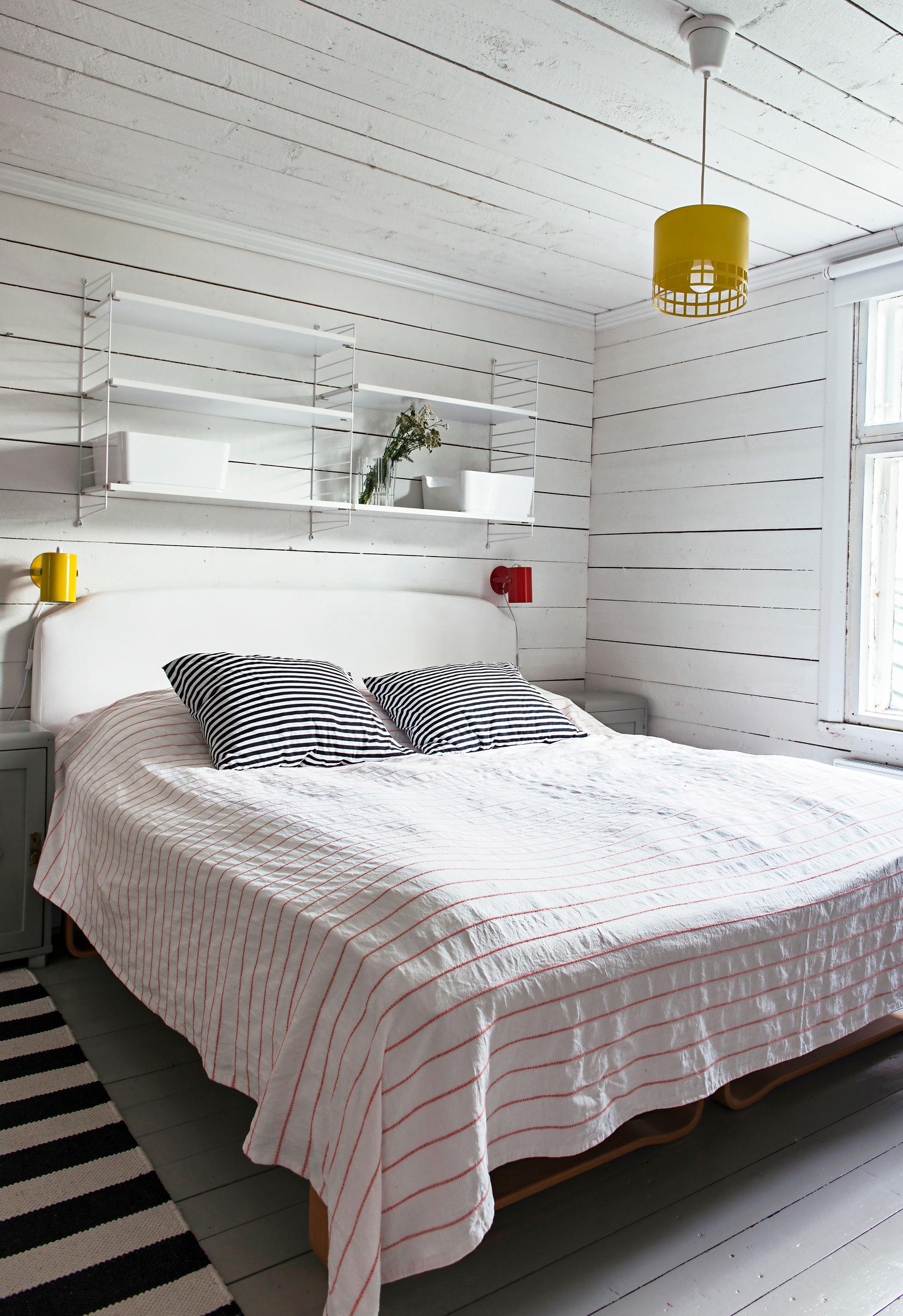
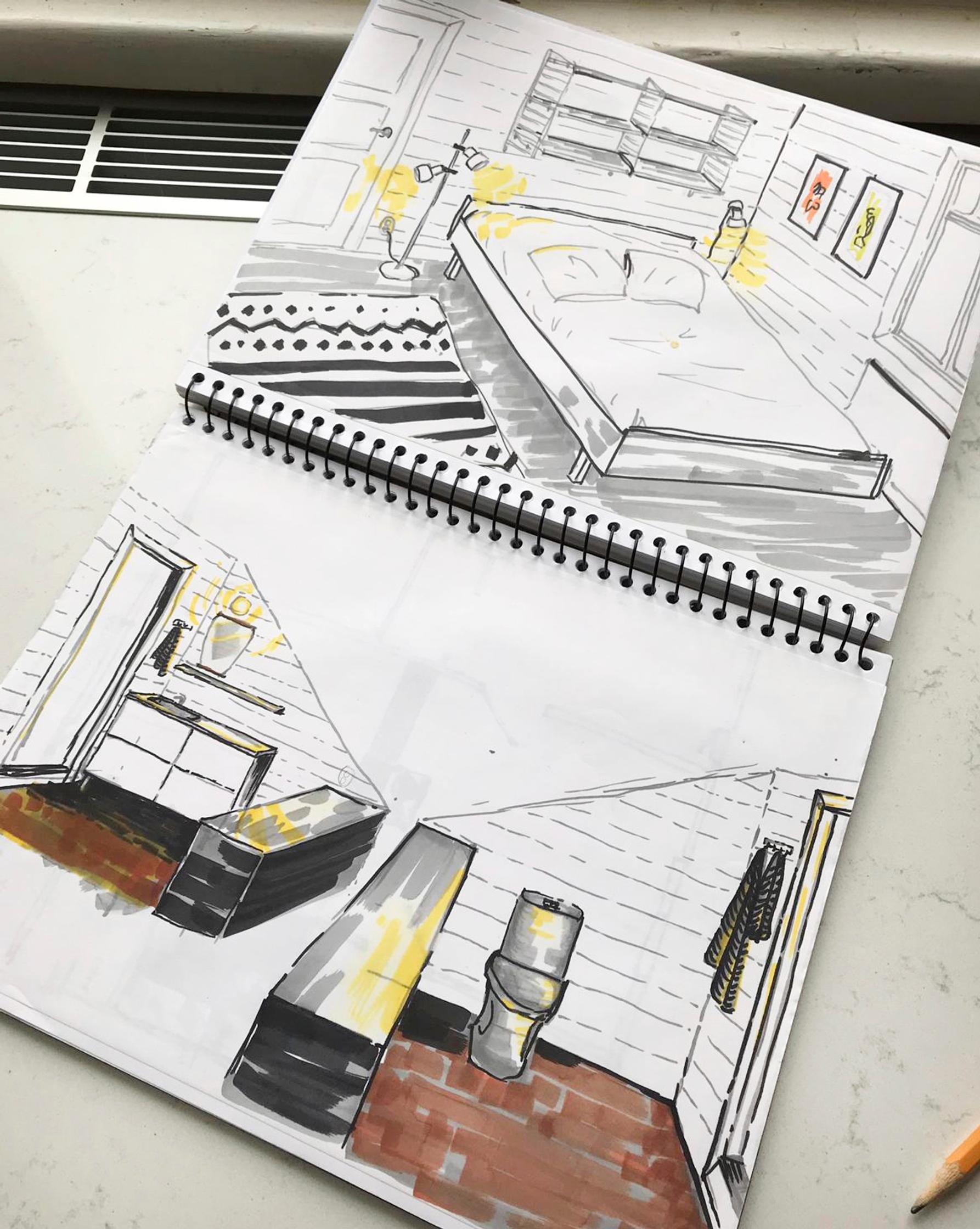
Daily life in the old log house has been about more than just renovation. The couple got married and held the wedding on-site, Eeva finished her university studies, and they welcomed two children. Eeva and Aki have enjoyed always having a meaningful project to focus on.
For them, the house’s architectural details mattered more than material possessions. Once they peeled away the layers covering the logs, they kept many visible, though some were painted white. The plank floors were given a fresh, light-gray finish.
Upstairs, they renovated the parents’ bedroom, an office, and a small room for one of the children. As the family grew, Eeva and Aki added another small children’s room in an unfinished space. The entire upstairs was insulated further, but they chose not to replace the original windows. Their research indicated this old house needs its drafty windows to breathe.
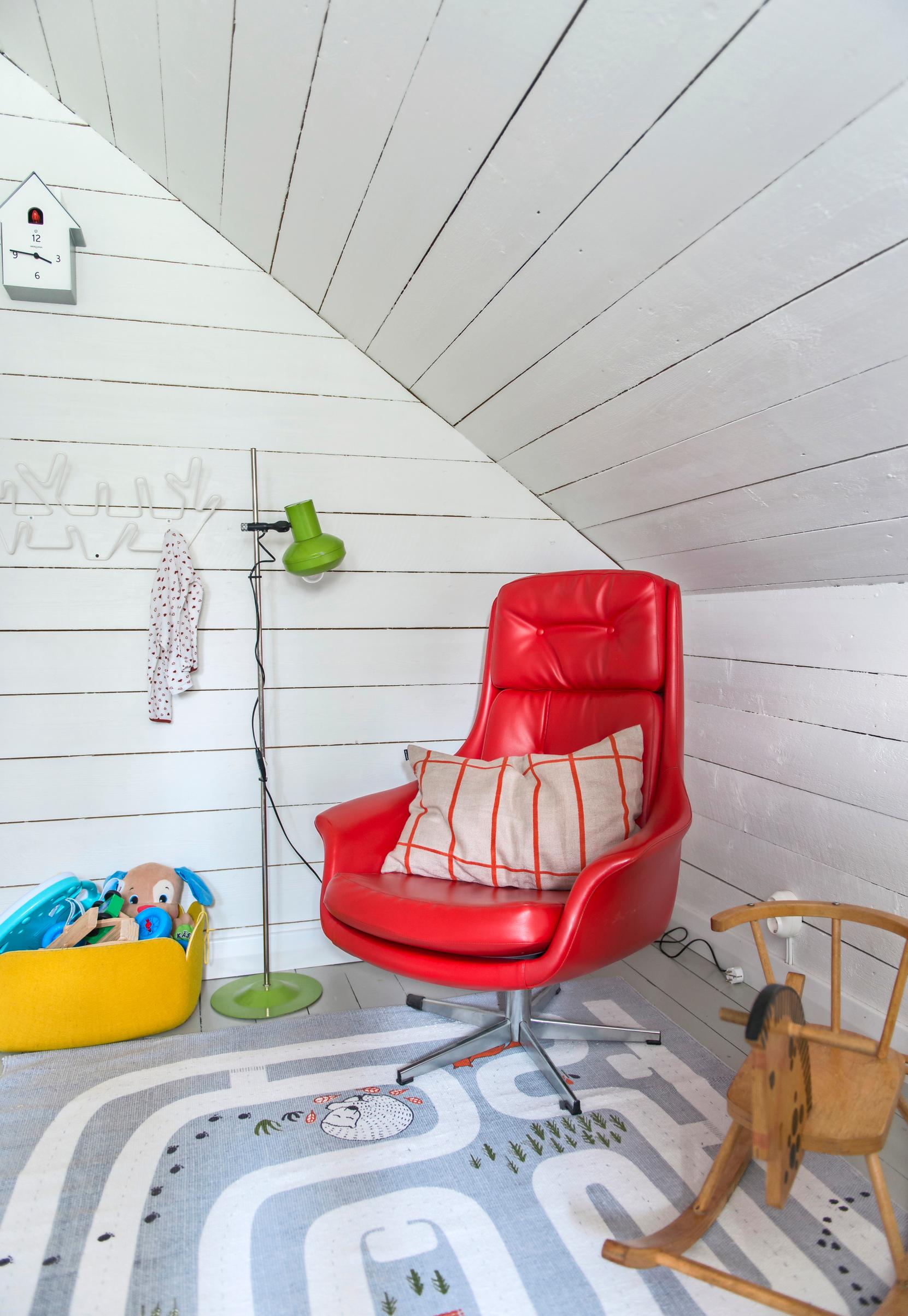
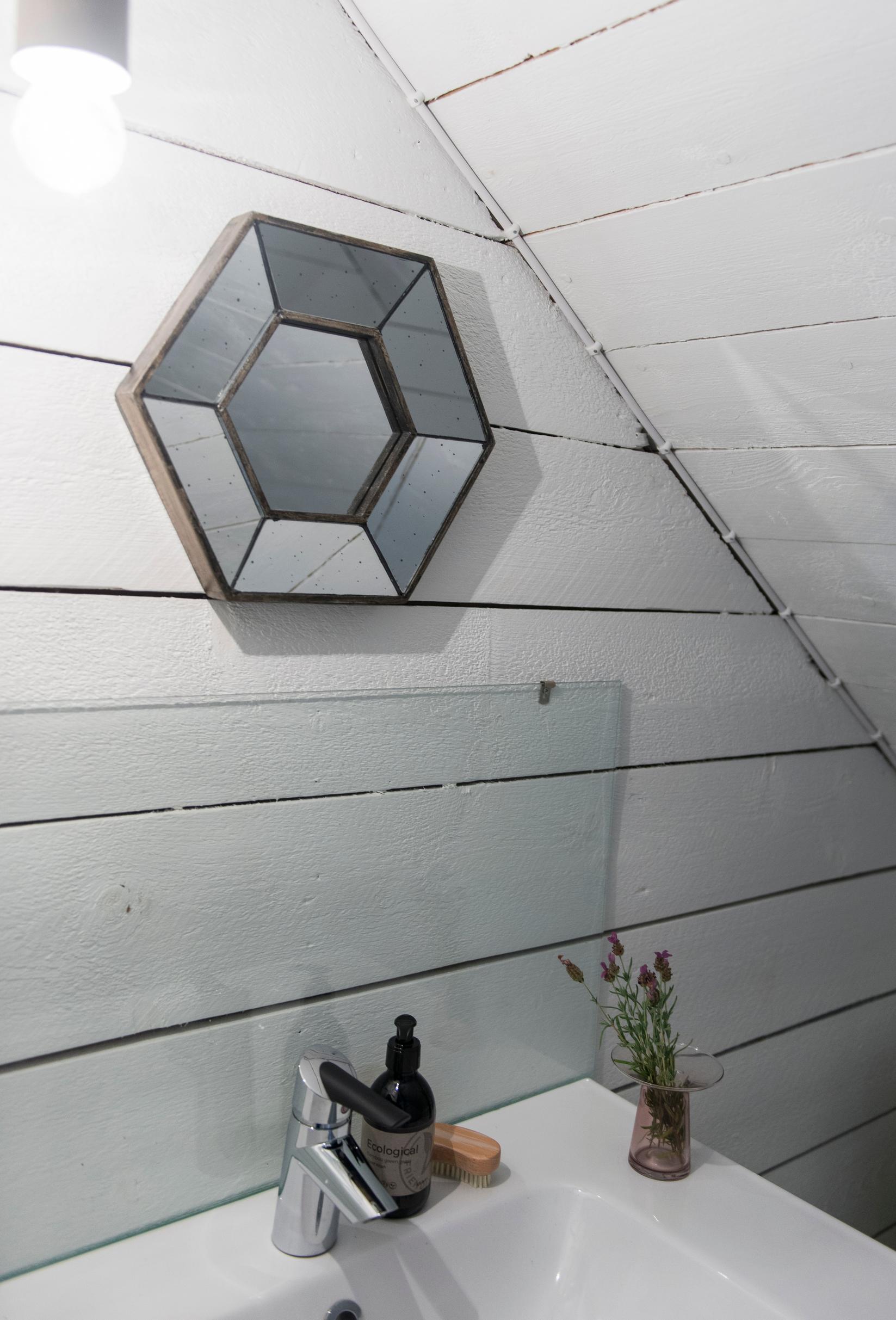
Sure, it was a bit daring and naive to buy an old property.
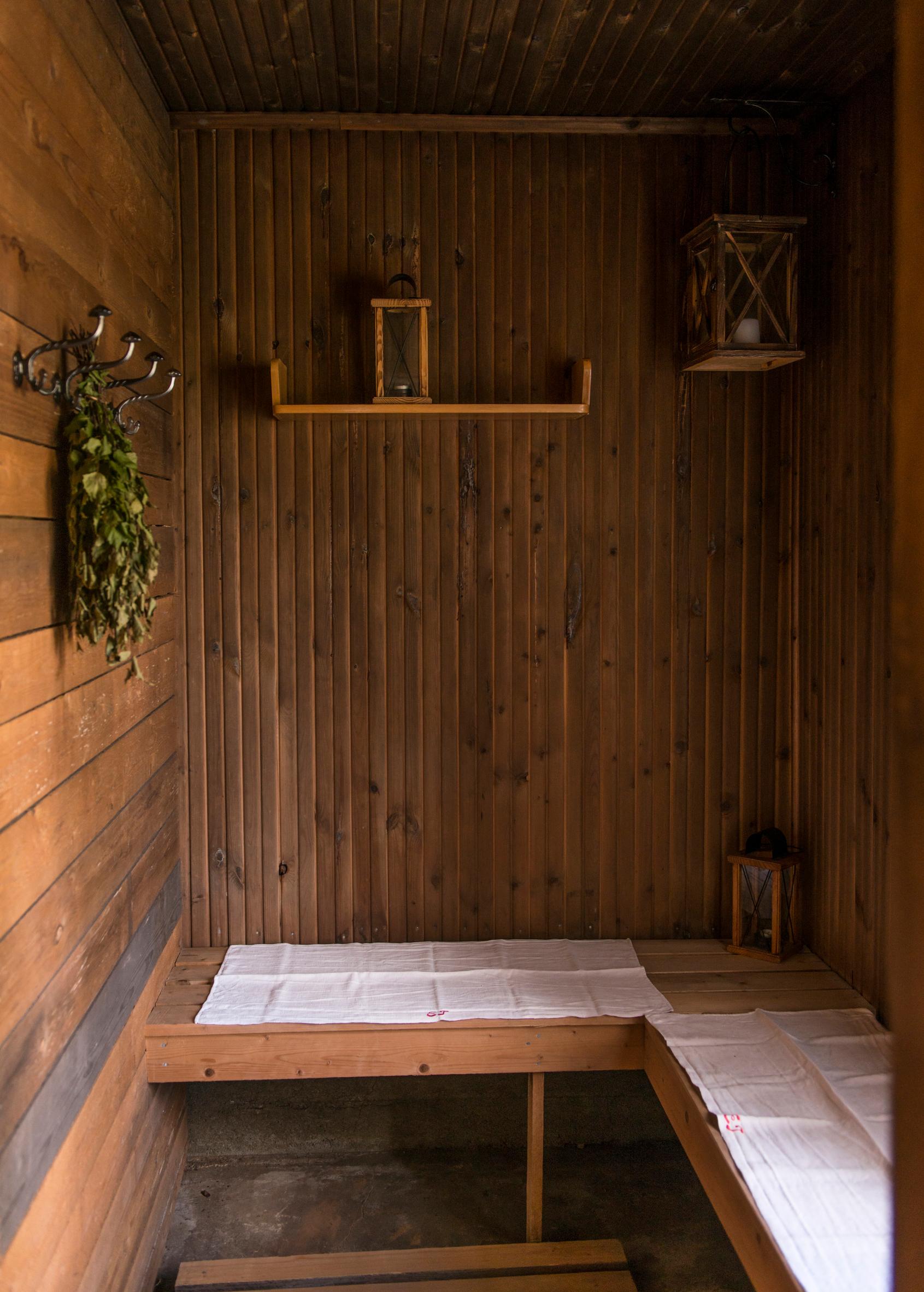
The long project culminated in the kitchen renovation finished in summer 2017. Initially, Eeva dreamed of a large island but later let it go. Now, at the heart of the home is a massive table that seats twelve. Under the stairs leading to the second floor, there used to be a windowed cool pantry, which was combined with the kitchen so its window lights one end of the room. The family relishes cooking in their new, functional, and spacious kitchen.
Seven years—and a few bottles of champagne—later, the home is nearly complete. Outside, the vegetable plot thrives with root vegetables, kale, herbs, and Swiss chard. They roast sausages and marshmallows at the backyard fire pit. Next, they're thinking of clearing out the barn with the children’s grandfather.
“Sure, it was a bit daring and naive to buy an old property. If we had known beforehand how much work it would require, we might not have done it. Still, I wouldn’t trade a single day. You learn by doing, and you need a dash of craziness,” Aki says.
